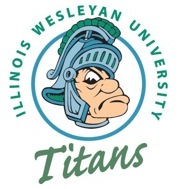Below is a summary of the abstract you submitted. Presenting author(s) is shown in bold.
If any changes need to be made, you can modify the abstract or change the authors.
You can also download a .docx version of this abstract.
If there are any problems, please email Dan at dar78@pitt.edu and he'll take care of them!
This abstract was last modified on March 25, 2021 at 10:58 a.m..

Viruses that infect bacteria are called bacteriophages and can be readily found in diverse environments. There are approximately 1031 bacteriophages on Earth. In a search for new bacteriophages from the Illinois Wesleyan’s campus in Bloomington, Illinois led to discovery of Welcome, a bacteriophage that welcomes you to learn more about these viruses. The plaques found were small and often had small bubbles in them. PCR was used to test for relationship to known bacteriophages and lysogen testing was performed to determine if the bacteriophage could integrate into the host genome. TEM analysis placed this bacteriophage as a member of the Siphoviridae in the Caudovirales. The genome was sequenced at the University of Pittsburgh and analyzed using PECAAN, a bioinformatics software webpage. The PECAAN webpage compiled data from several analytical software analyses including HHPRED, PhagesDB, TmHmm, GeneMark, Glimmer and NCBI Blast all of which were used when attempting to discern the function of a particular gene. The genome consists of 63,952 base pairs, and approximately 122 genes. Welcome is one of only three other ED2 phages which have been analyzed.
Bacteriophages are viruses that infect bacteria, found all over the world. Due to the number of bacteriophages, new phages are constantly being discovered and sequenced. Warren, a Microbacterium foliorum phage was discovered in a sample from Muncie, IL. It was isolated and had its DNA extracted at IWU. Using protocols such as TEM analysis and PCR, Warren seemed to have unique characteristics so it was sent to the University of Pittsburgh for genomic sequencing. The genomic sequence of Warren was used to place it in a new cluster of M. foliorum phages, the GA cluster, along with the previously sequenced Appa which was isolated in Pennsylvania. Annotation of Warren was completed using the program PECAAN, which uses GeneMark and Glimmer to identify the start sites of the genes and used phages from similar clusters as well as HHPred to identify gene function. Of the 66 genes annotated, 23 were given functions.
